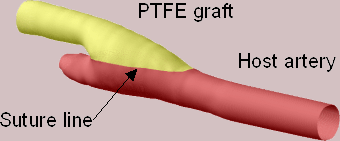
Experimental-surgical study (long term animal study) and Fluid dynamical / wall mechanical study (mathematical modeling, computer simulation)
Apart from cell biological and biochemical influences on Intima Hyperplasia (IH) in synthetic prostheses reactive mechanisms resulting from non-physiological conditions play a certain role in the disease process.
The aim of the study: Investigation of the relationship between
|
Flow patterns Mass transport processes Mechanical stresses |
postoperative IH |
Different graft-artery connector types should be classified with respect to long term function of vascular reconstructions.

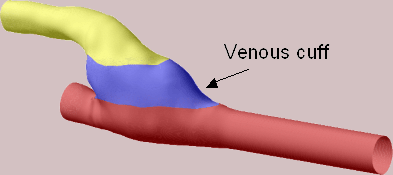
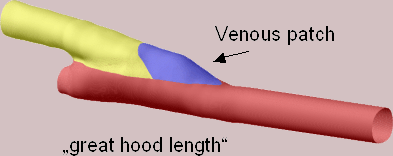
Development based on data of luminal casts of femoral bypasses implanted in sheep.
Material properties:
determined from exp. deformation results.
Elastic moduli: Ev = 2×Ea, Eg = 18×Ea
® Compliance mismatch
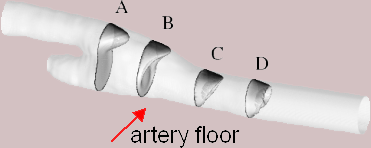 |
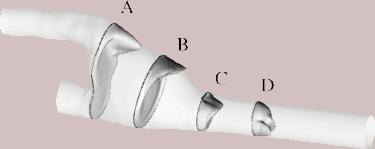 |
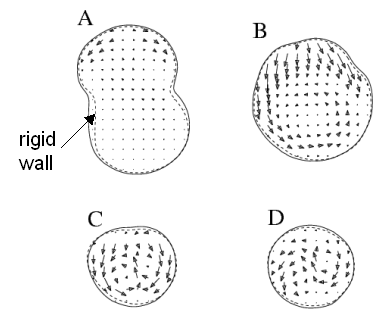 |
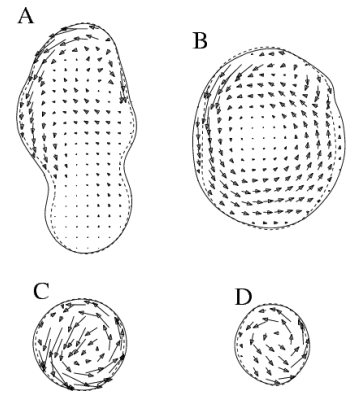 |


continuous suture p = 100 mmHg
Medium size titanium VCS clips, clips are modeled as stiff springs connecting two shell structures at discrete locations, between the clips the two structures are not attached simulating the situation prior any healing.
 |  |
|
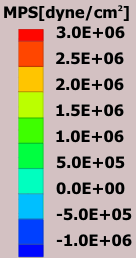 |
Compliance mismatch ® stress discontinuity at the suture lines:
Higher stress occurs in the stiffer material.
Better matching: vein - artery
Model: 3D patch inserted in the shell structure (limitation of computational efforts) Appropriate constraints along the common b. guarantees the correctness.
 |
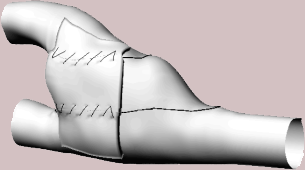 |
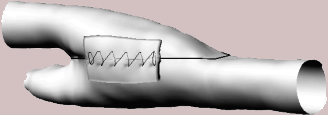 |
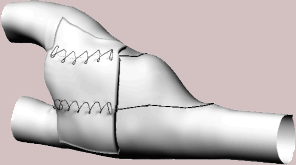 |
Suture material: Prolene 6.0 (d = 0.093 mm), Suture pre-stress: 2000 dyne
Numerical suture model: Truss elements (ABAQUS): transmit only axial force, 2 node straight truss, uses linear interpolation for position and displacement.
Miller-cuff anastomosis: p = 100 mm Hg
 | 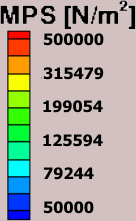 |
Suture stress:
IH: On the artery floor in the anastomotic region and along the sutureI lines of the junctions.
Flow field:
The simulation demonstrates the
influence of asymmetries and local geometric irregularities
on the flow and WSS patterns
The in-vivo data support the advantage of the flow field characteristics in the arterial floor area of the Miller cuff.
Stress field:
More compliant materials results in
The wall mechanics and the compliance mismatch of the materials seems to play the mayor role in the development of IH.